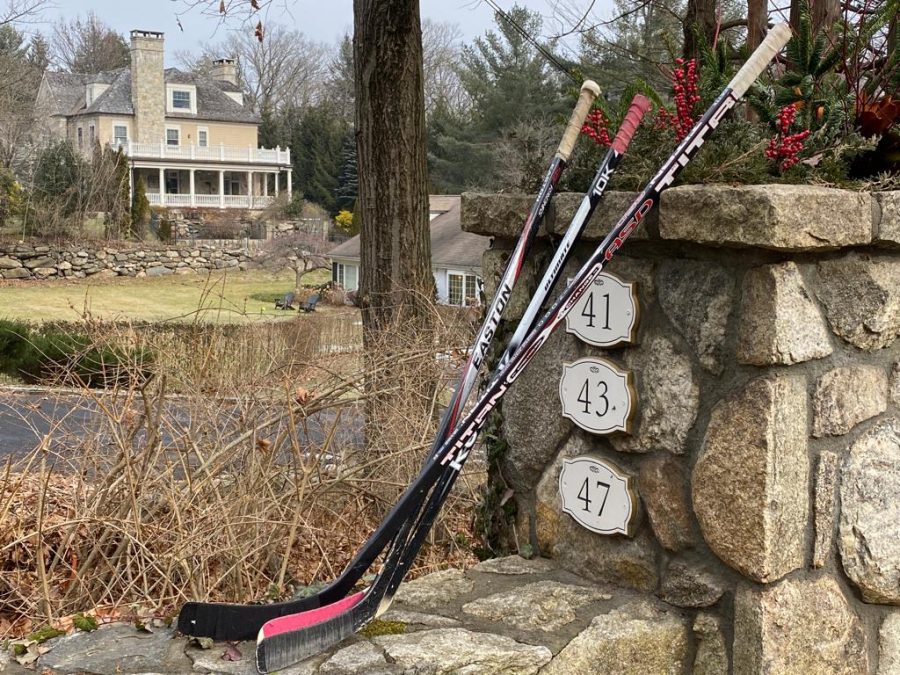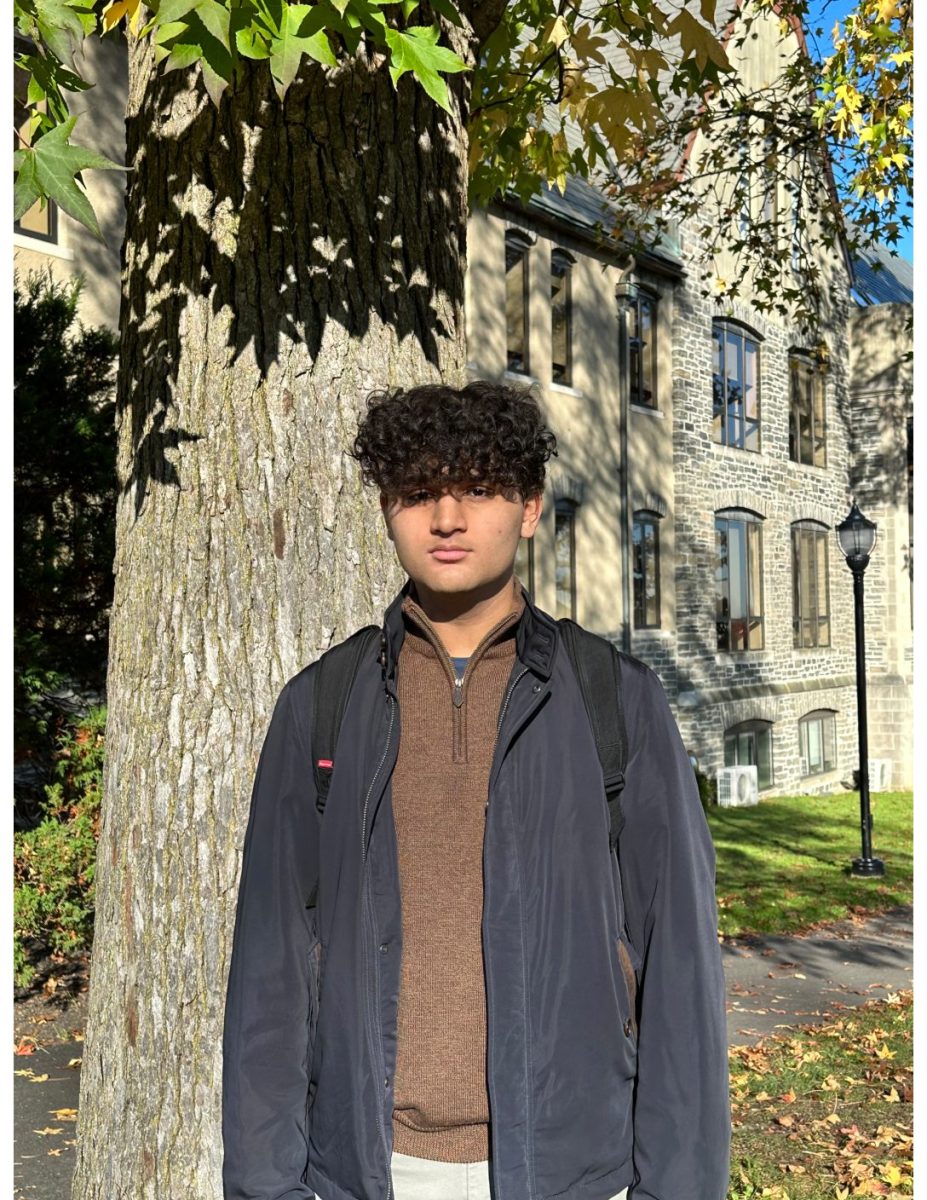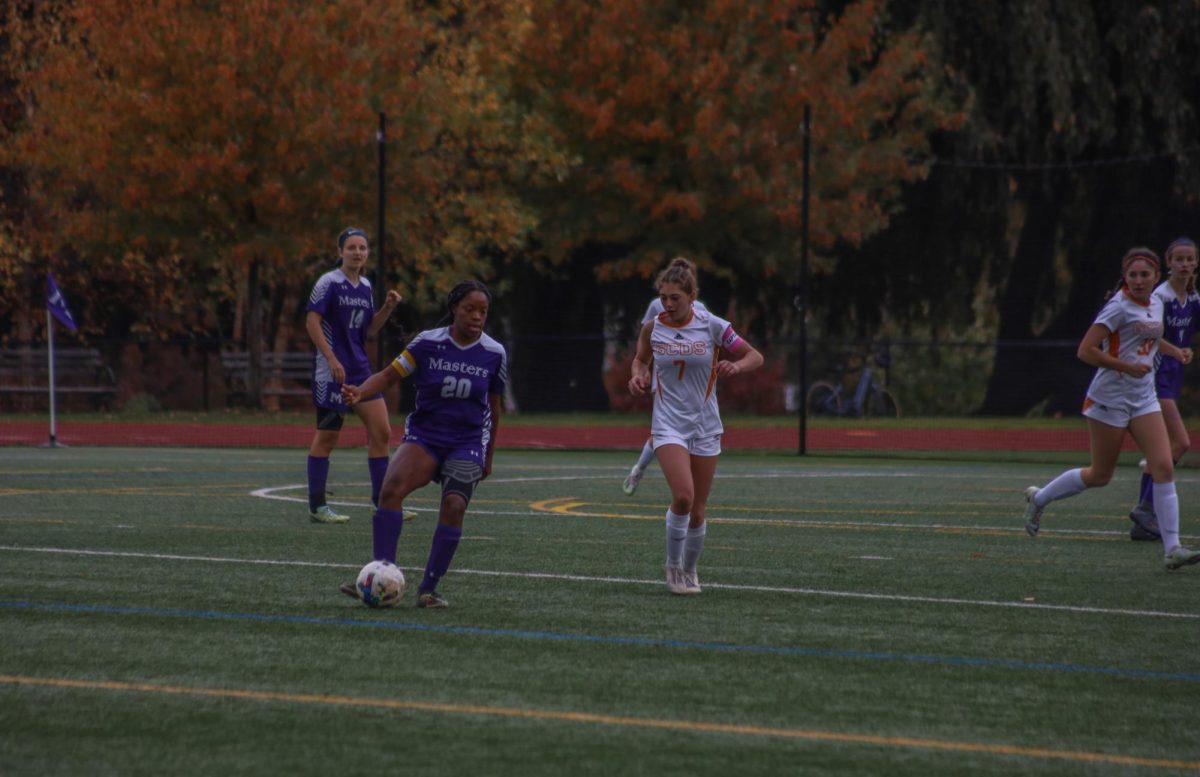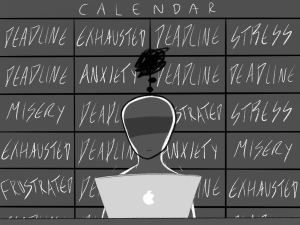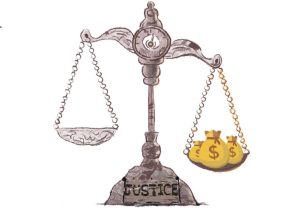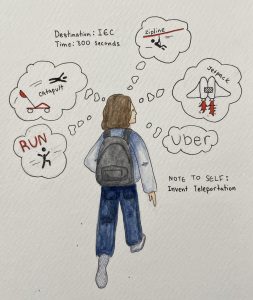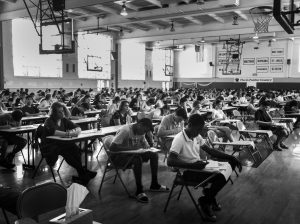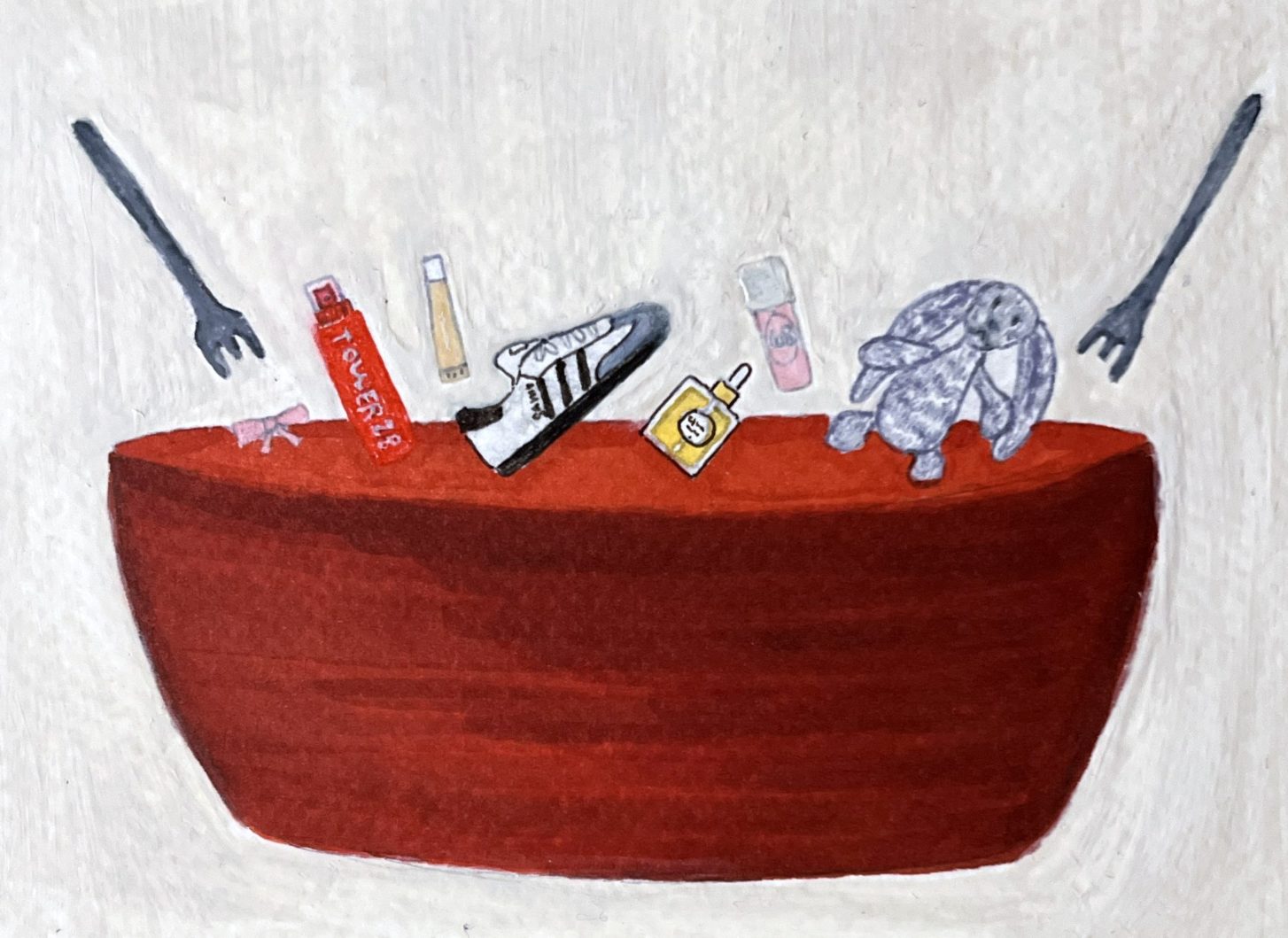St. Lukes remembers Balkind after tragic accident
Hockey sticks sit outside of a Connecticut residence after the death of high school sophomore Teddy Balkind. After Balkind’s death, many people put hockey sticks outside of their homes as a tribute to his life.
February 11, 2022
On Thursday, Jan. 6, sophomore Teddy Balkind from the St. Luke’s School in New Canaan, Conn. died at a junior varsity hockey game against The Brunswick School. A Brunswick player’s ice skate blade cut Balkind’s neck in an on-ice collision during the game. The player was unable to stop before the fatal collision. Coaches and medical staff at Greenwich Hospital, where Balkind was taken after the accident, took all the action they could to try and save him .
There has been an inaccurate story being told regarding this tragic accident. While many news sources state that Balkind fell during the game and a Brunswick player skated over him, eyewitnesses to the event say that this was not the case. In an email sent out by Head of The St. Lukes School Mark Davis on behalf of the Balkind family entitled “Setting the Record Straight”, the events of Jan. 6 were clarified.
“Teddy did not fall and was not lying on the ice. He was skating upright and low. During the normal course of play, another player’s leg momentarily went into the air and, through no fault of anyone’s, or any lack of control, his skate cut Teddy. Why is this important to share? Because it’s accurate and because it emphasizes the lack of any fault. These boys were excellent skaters, playing a great and fair game when an unimaginable accident wreaked havoc,” the email stated.
Sofia Shklovsky, a junior at St. Luke’s, recalled hearing about Balkind’s passing for the first time.
“When I first heard about the accident, I could not believe it. The first thing I thought of was about how I recognized Teddy’s last name. I remembered that he has a sister in the grade above me, and I just felt so awful. I couldn’t imagine something like this happening to my brother,” she said. “On the Monday following what happened, we all went to the auditorium and our Head of School said a few words. It was pretty brief and we had a moment of silence, but it was very hard. I didn’t personally know Teddy, but that atmosphere was very scary. You never expect something like this to happen in your own school.”
In the aftermath of his death, people everywhere are mourning and honoring the life of Balkind. Many have taken to social media, taking pictures of hockey sticks outside the doors of their houses under the hashtag #SticksOutForTeddy. On Jan. 19, at a New York Rangers hockey game, the team wore “Balkind” and Balkind’s number five on their jerseys during pregame warmups as a tribute and invited the St.Lukes hockey team to the game. Even the National Hockey League released a statement regarding the incident on their official Instagram, stating: “The National Hockey League mourns the tragic passing of Teddy Balkind, a member of the hockey family lost too soon. Our prayers and most heartfelt condolences go out to his family, his St. Luke’s teammates and his many friends.”
Fatal accidents such as these are extremely rare, but this tragedy has resurfaced the debate on neck protection for younger, amature hockey players. According to The New York Times, both St. Lukes and Brunswick School play under the rules of the New England Preparatory School Athletic Council, which does not require high school hockey players to wear neck guards.
Sam Brande, a friend of Balkind’s, created a Change.org petition to change this rule and make neck guards mandatory for hockey players to prevent tragedies like this from occurring to anyone else, which currently has over 107,000 signatures.
Under the petition, Brande wrote, “I lost one of my best friends due to lack of player safety rules in USA hockey. Please consider signing this so we can raise awareness and nobody needs to lose a loved one or a life in an avoidable accident.”
However rare fatal injuries in sports are, accidents like these are a reminder to all to be safe while playing high-risk contact sports and always wear proper protective equipment and to have a reliable emergency protocol.
Head Athletic Trainer Kalya Medina talked about the emergency sports protocol Masters has in place and the importance of wearing proper safety gear.
“At the beginning of each athletic season, I review all EAP’s, or emergency action plans, with all coaches in a coaches meeting, with the athletic director as well. We have them review what the plans are in case an emergency happens in their specific field. So before the emergency happens, they’ll know which coach will call 911, which coach will alert campus safety or security so they all know what roles they should do ahead of time so they can be prepared,” she said. “In regards to safety equipment, I think education is key to ensuring that proper protection is being provided. Coaches, parents and athletes should all be aware of what protective equipment is recommended and required for individual sports. The equipment should be National Operating Committee on Standards for Athletic Equipment (NOCSAE) certified and is the appropriate size and fit for the athlete.”




